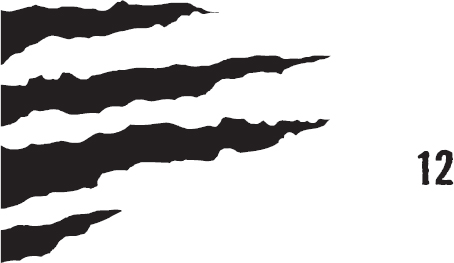
SOMETIMES YOU JUST HAD TO LAUGH. DR. CATALYST was doing that now. The reason clichés become clichés is because there is usually some measure of truth in them. And in this case the accuracy of that old saying “the best place to hide something is in plain sight” was proving itself beautifully.
Unlike his Pterogators, which were developed and hatched primarily in the swamp, his Muraecudas presented a far more difficult challenge. They could not live in freshwater. Thus the Everglades were off-limits, at least temporarily. He needed power, a filtration system for his saltwater tanks, and isolation. In the swamp, hiding was not a problem. It must have been pure dumb luck that Emmet and Calvin discovered where he was hiding Dr. Doyle. In fact, it ate at him a little bit. Maybe he would have a face-to-face talk with Emmet Doyle and find out what he knew. And teach the impertinent little twerp a lesson at the same time. But that would have to wait for later.
Dr. Catalyst had scouted several locations and facilities to serve as a base for his Muraecuda work. He couldn’t risk someone stumbling upon his lab and finding out what he was doing by accident. One wrong turn by a tourist in a rental car, or a group of teenage vandals sneaking into one of his buildings, and everything would come crashing down.
His solution was another stroke of brilliance. On the outskirts of Florida City, a few miles west of Highway 1, was a long-abandoned amusement park known as Undersea Land. About forty years ago, a local entrepreneur tried to create a miniature ocean-themed attraction for the thousands of visitors heading to the South Florida beaches. Everything had a nautical theme. The merry-go-round allowed children to ride on the backs of plastic dolphins and whales instead of horses. Flying pirate ships replaced big-eared elephants.
The entire enterprise had been a huge flop. It barely lasted two years before the investors lost everything and closed it down.
But one of the attractions had been a live dolphin show. Inside a small, enclosed auditorium, dolphins and seals would perform tricks for the underwhelmed guests. It was a surprise to anyone visiting that the park had lasted as long as it did.
But it was perfect for his needs. The aquarium, once the equipment was upgraded and the tanks were filled with salt water, was the ideal place for him to produce his Muraecudas. His only problem was avoiding discovery. And he had solved it by going legitimate.
He created a series of shell companies and hired a developer, Mr. David LeMaire. LeMaire was the unsuspecting stooge in Dr. Catalyst’s investment to refurbish and reopen a newer, better Undersea Land attraction.
LeMaire never met Dr. Catalyst, except via email and voice mail. This was not unusual. All over Florida there were plenty of real-estate developers who would do any deal anonymously, as long as the money showed up in their bank accounts.
LeMaire filed the permits, bought the property, and sent out a press release. He supervised the beginnings of the repairs and improvements, the most important of which was the construction of a nearly impenetrable twelve-foot-high solid steel fence around the entire park.
Shortly after the fence was completed and the aquarium refurbished, LeMaire received an email from Dr. Catalyst. Work on the renovation of the park was to cease. The crews were to be sent home. A problem with the financing had arisen and the new construction would have to wait. David LeMaire received his last bank transfer and went on to his next job with no questions asked. Real-estate deals fell through all the time in Florida. The newer, better Undersea Land was just another victim of poor financial planning, and soon it was forgotten. Again.
But the fence remained. And the refurbished aquarium no longer stood empty. It was where Dr. Catalyst was raising his newest species. Close to the ocean. Someplace no one would ever think to look.
Tonight he stood in front of the tank, watching his Muraecudas feed. They truly were magnificent creatures. Swimming, eating, killing machines, who devoured the lionfish he provided for them every day.
Unlike his Pterogators, these creations were not as … pliable. He could not teach them to seek out a specific prey as easily as he had done with Hammer and Nails and their clones. But he had chosen the exact right combination of aggressive reef-dwelling species. And lionfish lived and fed on the reefs. Well … his experiment had worked out better than he could have planned. By feeding them only lionfish, with each successive generation of clones, he was teaching their primitive brains to seek out lionfish as their first, preferred food source. Once in the ocean they would undoubtedly consume other species. They were predators, after all. But they would consume vast quantities of the invasive species first, and help restore balance to the ocean.
Dr. Catalyst looked at the newspaper in his hand. The headline read GOVERNOR SAYS NO TO DR. CATALYST. FLORIDA’S BEACHES TO REMAIN OPEN. He tossed the paper away. They had not acceded to his demands.
It was time to up the stakes.
Dr. Catalyst opened the digital recorder app on his tablet computer. Pushing the record button, he began speaking. “Attention, people of South Florida. I am asking all of you who truly love our environment to join me in my quest….”